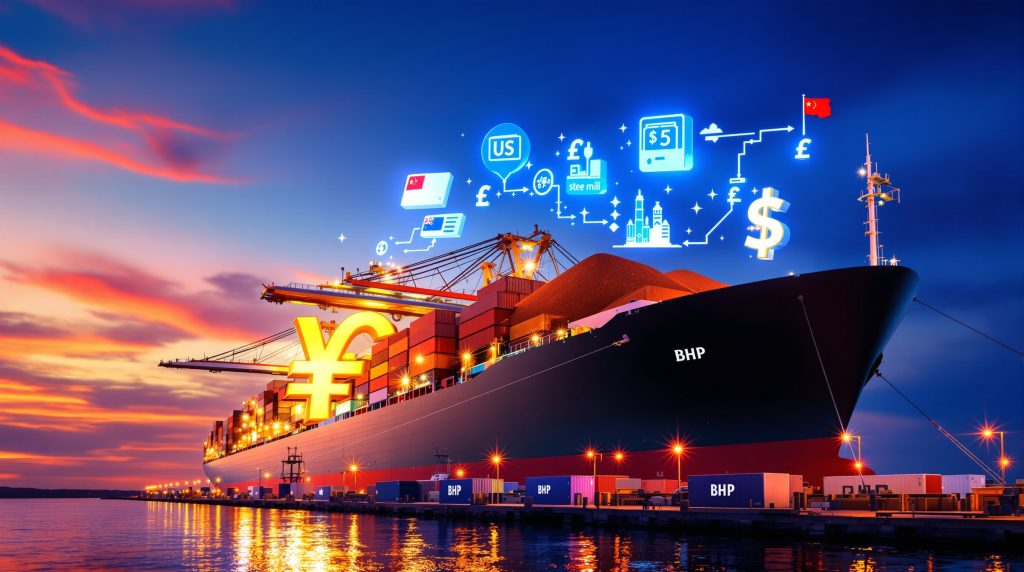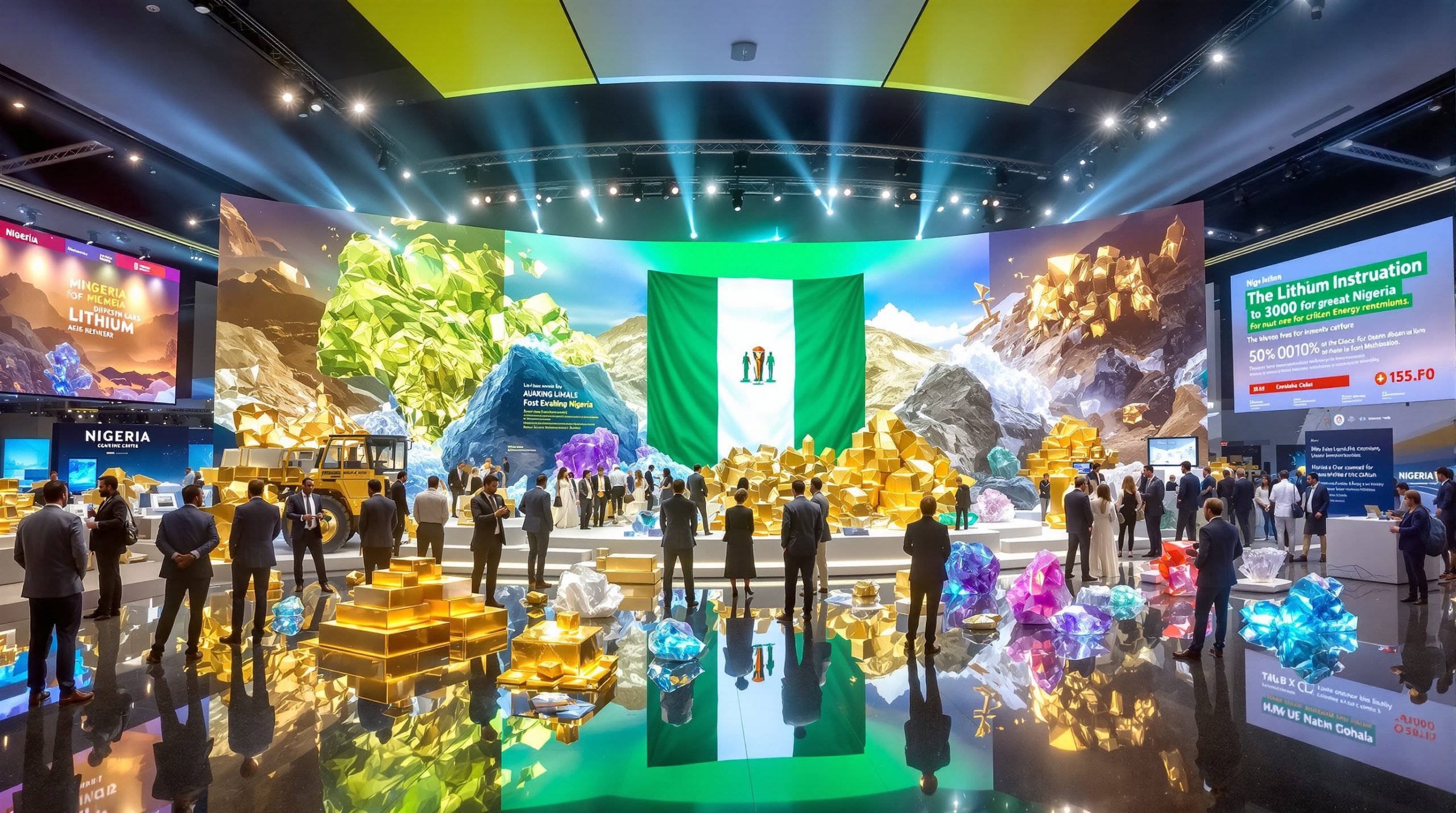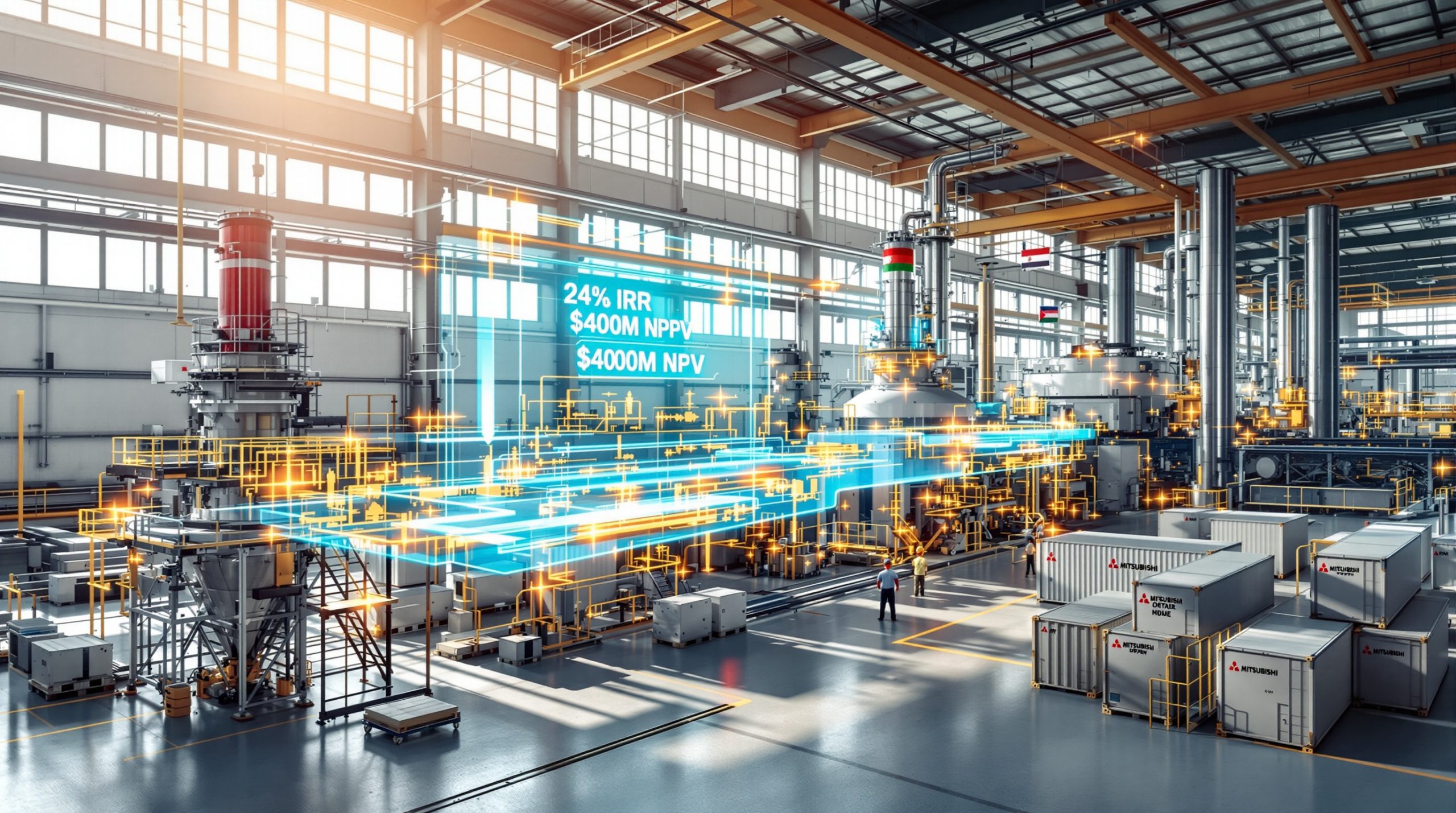The Landmark Currency Shift in Global Iron Ore Markets
BHP Billiton has struck a groundbreaking agreement with Chinese buyers to settle 30% of its iron ore spot trading in Chinese yuan (RMB) instead of US dollars. Set to begin in Q4 2025, this pivotal arrangement marks a significant departure from traditional commodity trading practices and signals a potential power shift in the global iron ore price trends.
The deal represents more than just a simple currency change. According to industry sources, it requires "the integration of domestic bank loans, cross-border payment systems, and exchange rate hedging to form a closed loop for the whole process." This complex financial architecture underscores the strategic importance of the arrangement for both parties.
With BHP shipping approximately 295 million metric tons of iron ore to China in 2024 alone, the scale of this currency transition is substantial. The 30% RMB settlement represents roughly 88.5 million tonnes or approximately $8-10 billion USD equivalent in annual trade value.
Understanding BHP's Strategic Pivot to RMB Settlement
The agreement follows a period of tension when Chinese buyers suspended US dollar-based iron ore trading with BHP in late September 2025. This action was part of a broader strategy by Chinese stakeholders to increase their influence in a market traditionally dominated by major overseas miners like BHP, Rio Tinto, Vale, and Fortescue, who collectively account for 70% of China's iron ore imports.
After negotiations, BHP agreed to the RMB settlement terms, effectively establishing a new chapter in Australia-China resource trade relations. The transition reflects pragmatic commercial adaptation despite broader US-China trade war insights that continue to shape global market dynamics.
BHP's Western Australia Iron Ore division, with an annual production capacity exceeding 290 million tonnes, has positioned the company as a critical supplier to China's massive steel industry. This relationship creates both interdependency and strategic leverage points for both parties.
What Triggered the Currency Settlement Change?
The immediate catalyst for this currency shift was the suspension of USD-based trading by Chinese buyers in September 2025. However, the underlying motivations reveal deeper strategic considerations.
For Chinese buyers, RMB settlement offers several practical advantages:
- Reduced exchange rate risks when purchasing iron ore
- Lower financial costs for procurement operations
- Better alignment between raw material costs and finished steel prices (both denominated in RMB)
- Enhanced leverage in price negotiations
From BHP's perspective, the compromise reflects a pragmatic business decision to maintain market access in its largest export destination. Australia supplied 67% of China's total iron ore demand insights in 2023, equating to approximately 710 million tonnes, demonstrating the critical importance of this trade relationship.
The timing also coincides with broader international currency diversification trends and China's ongoing efforts to internationalize the RMB, particularly in strategic commodity markets.
Key Components of the RMB Settlement Agreement
The agreement between BHP and Chinese buyers contains several critical elements that structure how this currency transition will function in practice and potentially expand in the future.
What Terms Did BHP Accept in the New Agreement?
The core components of the settlement agreement include:
- 30% of BHP's iron ore spot trading with China will shift to RMB settlement
- The agreement specifically covers CFR-based prices at Chinese ports
- Implementation begins in Q4 2025
- BHP's 2026 long-term contracts remain dollar-denominated for an observation period
- Future negotiations for RMB-based long-term pricing depend on market acceptance of China's RMB iron ore index
This phased approach indicates BHP's cautious strategy, evaluating RMB settlement effectiveness in spot markets before potentially extending to larger-value long-term agreements. The observation period for 2026 long-term contracts provides time to assess the functional effectiveness of the new settlement system.
For the RMB-based pricing to succeed in long-term contracts, China's RMB iron ore index must demonstrate sufficient liquidity, transparent methodology, and resistance to manipulation—all standard requirements for commodity benchmarks under international financial standards.
How Will Settlement Mechanics Work?
The shift to RMB settlement involves considerably more complexity than simply changing the currency denomination. It necessitates integration of several financial systems and risk management mechanisms:
- Domestic Chinese bank loan systems to facilitate buyer payments
- Cross-border payment infrastructure, likely utilizing China's Cross-Border Interbank Payment System (CIPS)
- Exchange rate hedging mechanisms to manage currency risk
- Development of a closed-loop process for the entire transaction cycle
China's Cross-Border Interbank Payment System (CIPS) processed 134.5 trillion RMB (approximately $18.9 trillion USD) in 2023, providing the infrastructure necessary for large-scale RMB settlements globally.
The Dalian Commodity Exchange (DCE) iron ore futures contract, launched in 2013 and denominated in RMB, has already become the world's largest iron ore derivatives market by volume, providing a foundation for price discovery in the Chinese currency.
Market Implications and Power Dynamics
The currency settlement shift creates significant ripple effects throughout the iron ore market and beyond, reshaping power dynamics between suppliers and consumers while potentially influencing broader currency markets.
How Does This Agreement Affect China's Position in Iron Ore Markets?
China Mineral Resources Group, alongside Chinese steelmakers and traders, stands to gain several strategic advantages from this arrangement:
- Reduced exchange rate risks by eliminating USD/RMB conversion for a significant portion of iron ore purchases
- Lower financial costs through decreased currency conversion fees
- Enhanced procurement initiative for Chinese steel producers through better cost structure alignment
- Strengthened negotiating position with major miners
Industry sources told SteelOrbis that the agreement "will bring more power to Chinese mills in negotiations and in the coming months it may help to improve their profitability," which had narrowed in September 2025 due to high iron ore prices and weak steel demand.
China's position as the world's largest iron ore importer and steel producer—producing approximately 1.02 billion tonnes of crude steel in 2024, representing about 54% of global production—gives it substantial market leverage when acting collectively.
What Are the Broader Currency Implications?
The settlement shift carries significant implications for currency markets and international trade patterns:
- Increased proportion of RMB usage in global commodity trade
- Advancement of RMB internationalization efforts
- Potential weakening of US dollar monopoly in iron ore transactions
- Promotion of trade diversification in global commodity markets
The RMB ranked as the 5th most-used global payment currency in 2024, accounting for approximately 4.7% of international payments according to SWIFT data. However, approximately 80-85% of global commodity trades remained USD-denominated as of 2024.
This agreement represents another step in China's broader strategy to internationalize the RMB and reduce dependency on USD-based trade settlement, particularly for strategic commodities where China holds significant buying power as the dominant consumer.
Context of Global Iron Ore Supply Chain
Understanding the BHP-China agreement requires examining the broader iron ore supply landscape and China's position within it.
How Significant Is BHP in China's Iron Ore Supply?
The agreement takes place within a highly concentrated supply landscape:
- Four major miners (Rio Tinto, Vale, BHP Billiton, and Fortescue) account for 70% of China's iron ore imports
- BHP's annual shipments to China totaled 295 million metric tons in 2024
- Australia's total iron ore exports reached approximately 881 million tonnes in 2024, valued at $136 billion AUD
- China remains the world's largest iron ore importer and steel producer
The concentrated supply structure creates significant leverage for major miners, but also makes them vulnerable to collective action by Chinese buyers, as demonstrated by the September 2025 trading suspension.
Rio Tinto, BHP's major competitor, shipped approximately 320 million tonnes to China in 2024, demonstrating similar dependency on Chinese demand. Brazilian miner Vale ships approximately 200 million tonnes to China annually, but with significantly longer shipping times (30-45 days) compared to Australian suppliers (7-14 days).
What Market Reactions Have Followed the Agreement?
Initial market responses have been measured but suggest potential longer-term implications:
- Industry sources anticipate increased negotiating power for Chinese mills
- Potential improvement in Chinese steel mill profitability, which had narrowed in September 2025
- Iron ore prices showed a slight increase on October 9, the first working day after China's holiday period
The market reaction reflects both the immediate practical impacts and the potentially significant longer-term structural changes this agreement might trigger in global iron ore trading.
The industry primarily uses daily spot price assessments from independent price reporting agencies, with benchmark indices like Platts 62% Fe Iron Ore CFR China serving as reference prices for both spot and term contracts. The integration of RMB settlement will require careful alignment with these existing pricing mechanisms.
Future Outlook for Iron Ore Trading
The BHP-China agreement establishes a framework for potential expansion of RMB settlement in iron ore trading, raising questions about how the market structure might evolve.
How Might Long-Term Contracts Evolve?
The agreement establishes a pathway for potential expansion of RMB settlement:
- BHP has set an observation period for 2026 long-term contracts
- If China's RMB iron ore index meets market acceptance standards, negotiations for RMB-based long-term pricing will begin
- The transition period allows both parties to evaluate the effectiveness of the new settlement system
For RMB-based long-term pricing to succeed, several market acceptance criteria must be met, including:
- Trading volume thresholds
- Price correlation with physical market conditions
- Participation from diverse market participants
- Transparency in index methodology
Industry estimates suggest 50-70% of major miners' iron ore sales occur under long-term contracts, with the remainder in spot markets, making the potential expansion to long-term contracts significantly more impactful than the initial spot market implementation.
Will Other Miners Follow BHP's Example?
The precedent set by BHP raises questions about whether other major iron ore producers will adopt similar approaches:
- Rio Tinto, Vale, and Fortescue will likely monitor the implementation closely
- Chinese buyers may leverage this agreement in negotiations with other suppliers
- The success or challenges of BHP's implementation could determine industry-wide adoption rates
The Shanghai International Energy Exchange (INE) crude oil futures contract, launched in March 2018, provides a precedent for RMB-denominated commodity trading. By 2024, daily trading volumes exceeded 300,000 contracts, demonstrating the technical feasibility of RMB settlement in major commodity markets.
If other major miners follow BHP's example, it could accelerate the transformation of iron ore trading currency practices and potentially influence other commodity markets to consider similar arrangements.
Economic Impact Assessment
The currency settlement shift creates both opportunities and challenges for the various stakeholders involved.
How Does This Agreement Affect Australian Mining Interests?
For Australian mining operations, the currency shift introduces several considerations:
- Potential exposure to RMB exchange rate fluctuations
- Need for new financial hedging strategies
- Adaptation of accounting and financial reporting systems
- Possible implications for revenue forecasting and investor relations
Financial analysts note that Australian miners will need to develop sophisticated RMB hedging strategies, as the Australian dollar (AUD) and Chinese yuan (RMB) have different volatility patterns and correlations compared to the traditional USD/AUD pairing.
Currency hedging through forward contracts, options, or swaps typically costs 1-3% annually depending on volatility and contract structure. Under International Financial Reporting Standards (IFRS), foreign currency transactions require recognition at spot exchange rates, with subsequent remeasurement creating potential earnings volatility.
With iron ore representing approximately 54% of BHP's total revenue in FY2024 (generating $32.7 billion USD), the currency exposure implications are significant for corporate financial management.
What Are the Profitability Implications for Chinese Steel Producers?
Chinese steel manufacturers may see several financial benefits:
- Reduced currency conversion costs
- Improved price negotiation leverage
- Better alignment between raw material costs and finished steel prices (both in RMB)
- Potential for improved margins in a challenging steel market environment
China's steel industry includes approximately 500 steelmaking enterprises, with the top 10 accounting for about 40% of production capacity. This diverse buyer constituency means the benefits of RMB settlement may be distributed unevenly across the industry.
Chinese steel mill margins had narrowed in September 2025 due to high iron ore prices and weak steel demand. The RMB settlement could potentially improve profitability for these producers by reducing foreign exchange costs and providing more stable cost structures.
Geopolitical and Economic Significance
The BHP Billiton iron ore RMB settlement agreement represents more than a technical change in payment methods—it reflects broader shifts in global economic power and trade patterns.
How Does This Agreement Reflect Changing Global Trade Patterns?
The RMB settlement represents several important trends in international trade:
- Signals China's growing influence in setting terms for critical resource imports
- Reflects broader de-dollarization trends in international commodity markets
- Demonstrates evolving power dynamics between resource suppliers and major consumers
- Highlights the increasing economic leverage of major commodity importers
Several commodity markets have seen increased non-USD settlement in recent years, including Russian oil sales to China and India (RMB/Rupee), LNG contracts with RMB components, and agricultural commodities through currency swap arrangements.
Following 2022 sanctions, Russia-China energy trade shifted substantially to RMB settlement, with over 90% of bilateral transactions using RMB or Rubles by 2024, providing a precedent for major commodity trade denomination changes.
Total bilateral goods trade between China and Australia reached $267 billion AUD in 2024, with resources accounting for approximately 70% of Australian exports, making this currency shift relevant beyond just iron ore.
What Are the Long-Term Strategic Implications?
Beyond immediate market effects, the agreement may have lasting strategic consequences:
- Potential blueprint for RMB settlement in other commodity markets
- Acceleration of RMB internationalization efforts
- Recalibration of pricing power in global resource markets
- Evolution of risk management practices for cross-border commodity trades
China has established RMB currency swap lines with over 40 central banks totaling more than 4 trillion RMB ($560 billion USD), providing infrastructure for expanded RMB settlement in international trade.
Approximately 25-30% of Belt and Road Initiative (BRI)-related project financing and trade settlement occurs in RMB as of 2024, demonstrating China's broader strategy to increase RMB usage in international commerce.
The agreement demonstrates pragmatic commercial adaptation despite broader geopolitical tensions, potentially creating a model for continued economic cooperation in critical resource sectors while navigating complex diplomatic relationships.
FAQ: Understanding the BHP-China RMB Settlement
Why Is This Agreement Considered a "New Era" in Iron Ore Trading?
This agreement marks the first major shift away from US dollar dominance in iron ore trade between Australia and China. It establishes a precedent that could influence other commodity markets and reflects China's growing economic influence in global trade patterns.
The RMB settlement represents a significant step in China's broader strategy to internationalize its currency, particularly in markets where it holds substantial buying power. While the US economy and tariffs continue to influence global markets, this agreement could accelerate currency diversification.
The Shanghai Gold Exchange RMB Gold Fixing Price, launched in 2016, provides a successful precedent for RMB commodity pricing benchmarks in Asia, demonstrating the technical feasibility of such transitions.
How Will RMB Settlement Affect Iron Ore Price Stability?
RMB settlement creates different stability dynamics for various market participants:
For Chinese buyers, the arrangement eliminates USD/RMB currency risk, creating more stable procurement costs when both inputs (iron ore) and outputs (steel products) are priced in the same currency.
For Australian miners like BHP, it introduces RMB/AUD currency exposure that requires new hedging strategies. Under USD settlement, miners managed USD/AUD risk, whereas now they must develop expertise in RMB currency management.
The historical USD/CNY exchange rate fluctuated between 6.30-7.35 during 2023-2024, representing potential 14% currency exposure for Chinese buyers under USD settlement. By comparison, iron ore spot prices exhibited 35-40% volatility in 2024, fluctuating between $95-135/tonne.
What Technical Challenges Must Be Overcome for Successful Implementation?
Successful implementation requires overcoming several complex technical challenges:
- Developing robust cross-border settlement systems that integrate with existing banking infrastructure
- Establishing reliable RMB-based price benchmarks with sufficient liquidity and transparency
- Creating effective currency hedging mechanisms for Australian miners to manage RMB exposure
- Ensuring regulatory compliance across both Chinese and Australian financial systems
China International Payment System (CIPS) participants include 1,394 financial institutions across 112 countries and regions as of 2024, including major Australian banks with operations in China, providing the necessary infrastructure for direct RMB clearing.
The implementation will likely draw on lessons from the Dalian Commodity Exchange iron ore futures contract, which has evolved from limited participation at launch (2013) to becoming the primary Asian hedging tool, with average daily volume exceeding 2 million contracts by 2024.
How Might This Agreement Influence Australia-China Trade Relations?
The agreement demonstrates pragmatic commercial adaptation despite broader geopolitical tensions. It potentially creates a model for continued economic cooperation in critical resource sectors while navigating complex diplomatic relationships.
Australia supplied 67% of China's total iron ore imports in 2023, equating to approximately 710 million tonnes, highlighting the deep economic interdependence between the two countries in this sector.
The phased implementation approach, with an observation period for long-term contracts, indicates a cautious but cooperative stance from both parties, potentially setting the stage for expanded RMB settlement if the initial phase proves successful.
What Percentage of Global Iron Ore Trade Could Eventually Shift to RMB Settlement?
While no reliable long-term projections exist, China accounts for approximately 70% of global seaborne iron ore imports, suggesting this figure represents the theoretical upper limit if all suppliers eventually agreed to RMB terms.
The current agreement covers 30% of BHP's spot trading with China, but establishes a pathway for potential expansion to long-term contracts following an observation period. With industry estimates suggesting 50-70% of major miners' sales occur under long-term contracts, the potential for expansion is significant.
If other major miners (Rio Tinto, Vale, Fortescue) eventually adopt similar arrangements, a substantial portion of global iron ore trade could transition to RMB settlement over time, representing a fundamental shift in how this critical commodity market operates and potentially reshaping the WA resources impact on the global stage.
Are You Investing in the Next Major Mineral Discovery?
Don't miss out on significant ASX mineral discoveries as they happen – Discovery Alert's proprietary Discovery IQ model delivers real-time alerts on major finds, instantly turning complex mineral data into actionable insights for investors. Discover why historic mineral discoveries can generate substantial returns by visiting Discovery Alert's dedicated discoveries page.




